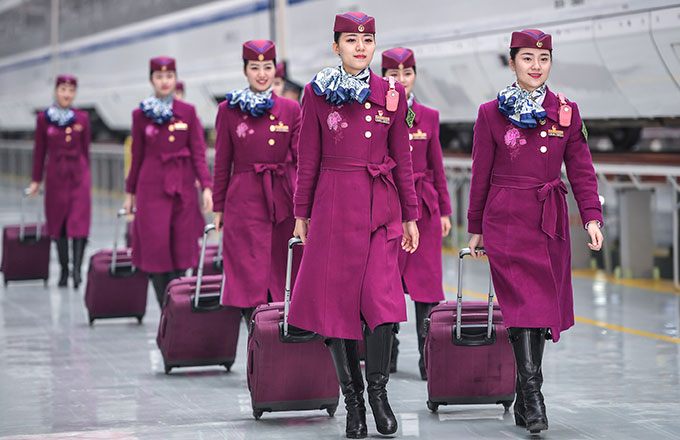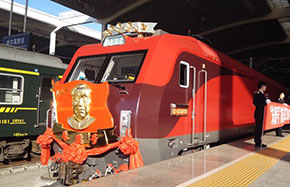Plenum offers new platform for urbanization
The Third Plenum of the 18th Central Committee of the Communist Party of China may be a good opportunity to push the country's ambitious urbanization bid - a major effort to change the development model of the world's second-largest economy.
The CPC's new leadership designated urbanization as a growth point of the economy and called for quality and new urbanization at its economic work conference in December, after China's exports were adversely affected by the lingering global crisis.
China's urbanization ratio hit 52.57 percent in 2012, increasing almost 1 percentage point each year from 17.9 percent in 1978. The per capita gross domestic product was about $6,102 in 2012. The steady and rapid urbanization seems sustainable for awhile along with the economic growth.
However, only 27 percent of the national population has urban hukou, or household registration, with which residential welfare is affiliated. More than 300 million migrant workers have lived in cities without hukou.
Although China has established a basic social security network nationwide, the welfare gap between an urban hukou holder and a farmer remains so large that local governments cannot afford to offer all migrant workers hukou in a short time.
After the central government abolished the agriculture tax in 2006, some migrant workers decided they would leave their small plots uncultivated at home rather than rent them out because of the absence of a functional land transfer market.
China's urbanization has been propelled by the artificial divide between urban and rural areas. The hukou system, which establishes the agricultural population's inferior position, is the main barrier to healthy urbanization in China.
Some local governments stress only urbanization as an immediate statistical driving force of economic growth, ignoring the necessary conditions of quality urbanization, such as the innovation and equalization of public services.
Gao Guoli, an economic researcher with the National Development and Reform Commission, pointed out recently that China's urbanization demonstrates three characteristics: slow industrialization, fast land urbanization and the prioritization of speed over quality.
China should draw lessons from Latin American countries, whose urbanization ratio is 79.6 percent, much higher than the 72.08 percent of Europe. But the industrialization of these countries is much lower than that of European countries. Poor people flood into cities and create new villages there.
In contrast, the United States' urbanization ratio of 85 percent is based on the coordinated development of agriculture and industry.
The Third Plenum is expected to instill in officials of various levels a sense that urbanization should not be regarded as an artificial means to boost domestic consumption, but as a necessary result of advancement of production efficiency in both agriculture and industry.
Right direction needed
"The next decade will be a crucial stage for China's urbanization," said Zhang Monan, an economy researcher with the State Information Center.
"The investment on China's Keynes-style urbanization cannot necessarily ensure sustainable GDP growth. The fundamental influence of urbanization does not lie in expanding demand at home but increasing the effects of economies of scale, labor distribution and cooperation."
Hopefully, this plenum will specify the direction of relevant reforms and make breakthroughs in coordinating the efforts of different ministries and local governments.
The National Development and Reform Commission disclosed in June that the Chinese government will transform rural residents fitting certain criteria into urban residents by lifting the hukou control of all small cities and towns, easing the limits on the hukou of middle-level cities in an orderly way, gradually lowering the conditions for hukou in big cities and prudently designing the conditions for applying a hukou in the largest cities.
Thus, local governments of small and middle-level cities will have to find new revenue sources to pay for the rising welfare costs.
The local urbanization of small and middle-level cities is an important channel not only to ease the population pressure on the largest cities in China, but also to boost balanced development of industry and the job market across the country.
In China there are 2,816 small and middle-level cities with a population smaller than 1 million. These cities and towns account for 84.5 percent of the national economy.
Recent research of the Beijing-based Northeast Asia Development Research Institute shows that China's urbanization ratio of small and middle-level cities is only 35.1 percent.
Zheng Xinli, a researcher in the Beijing-based China Center for International Economic Exchanges, said: "Whether the welfare gap between farmers and big-city residents can be filled in the next 10 to 20 years depends on the economic development of counties and small and medium-sized cities."
"If the urbanization ratio of the small and medium-sized cities can reach about 50 percent, they will make a powerful contribution to the reasonable growth of the quality national urbanization ratio," he added.


















